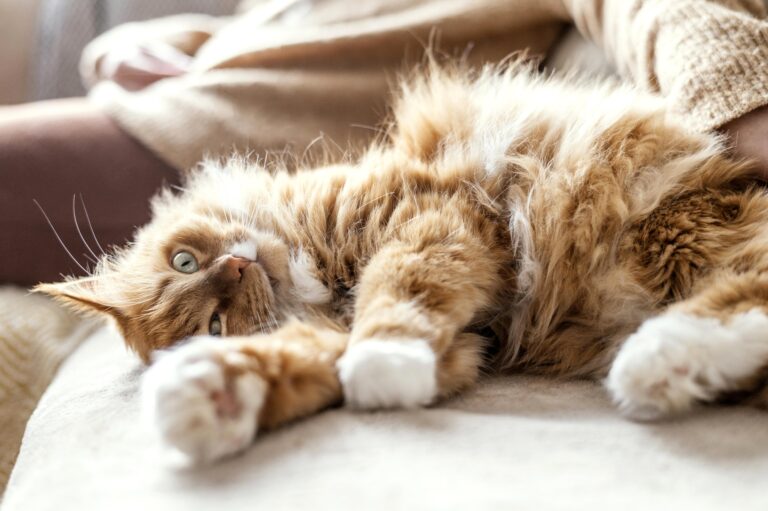Cats are inherently cautious creatures, and often, they may not transition to a raw diet as readily as dogs. If you observe that your cat is not immediately embracing the SARF™ diet, we recommend following our gradual transition guide.
This process requires patience and persistence, as it might take some time, but the results are entirely attainable and well worth it.
Processed commercial pet foods frequently contain ingredients that are superfluous and, in some instances, detrimental to a cat’s health. On the contrary, a SARF diet comprises raw ingredients tailored to the specific needs of the feline species.
This approach eliminates the necessity of denaturing proteins, causing them to lose their nutritional value through cooking procedures or adding unnecessary fillers that your cat cannot effectively digest.
Advantages of raw cat food
Premium protein sources
Cats are classified as obligate carnivores, signifying their nutritional needs are predominantly met through meat-based nutrients. Cats have a heightened requirement for protein, as they consistently utilise protein for energy.
Beyond merely fuelling their bodies, meat-based protein also plays a vital role in sustaining cats’ nervous systems, promoting hair growth, and fortifying their immune systems.
The quality of the protein derived from meat holds substantial importance, as bioavailable protein is more efficiently processed during digestion. Offering a diverse range of protein sources ensures that your cat maintains a well-rounded diet. For instance, relying solely on raw fish as a dietary staple can result in thiamine deficiency due to its thiaminase content.
Nursing cats necessitate an elevated protein intake to support the growth of their kittens, while older cats might also require increased protein levels to aid in absorption and metabolism.
Grain free and filler free
The top-quality raw cat food should completely exclude grains and fillers. This enables cats to satisfy their hunger with delectable, nourishing elements instead of ingesting unnecessary additives.
Numerous cat food brands incorporate grains into their products to cut costs and provide an inexpensive calorie source, even though this practice has been associated with sensitivities and various digestive issues in cats, including feline constipation.
When making your selection of raw cat food, it is essential to ensure that the ingredients are specifically crafted to offer the utmost nutritional value possible.
Bone composition
Achieving the appropriate blend and variety of bone composition is vital for cats.
Raw bones not only supply essential nutrients but also offer numerous health advantages, including the promotion of well-maintained teeth, gums, and digestive health.
How to switch your cat onto raw food
Transitioning your cat to a raw diet can be done at any time. The process involves three essential stages that you should follow.
Stage 1: Establishing a Feeding Schedule
If your cat is used to free-feeding, transition to scheduled feeding times. Choose a time when you can monitor the meal, and if your cat doesn’t eat within 30 minutes, remove it. This approach allows your cat to rest between meals, build an appetite, and adjust to a new diet, essential for digesting a SARF™ diet effectively.
Stage 2: Transitioning from Dry to Wet Food
Introduce wet food alongside dry food gradually. Start with a 25% mix of wet food for about 3 days, then increase to 50% wet food. Progress to a 75% wet food mix once your cat is comfortable. When your cat is content with 25% dry and 75% wet food, transition to 100% wet food, ensuring a smooth changeover at your cat’s pace.
Stage 3: Introducing Raw Mince or Chunks
Follow the same process as Stage 2, substituting wet food with 25% raw minced food or small chunks. Coat the raw food in wet food flavours to encourage acceptance. Increase the proportion of raw food while phasing out wet food. Once your cat primarily consumes raw mince or chunks with small amounts of wet food, progress to fully balanced 100% raw meals.
Throughout this transition, offer a variety of animal meats, starting with chicken or turkey and gradually introducing red meats like beef or pork. Include heart in their diet, as it contains natural taurine, vital for cats; avoid synthetic taurine supplements. Remember, this process may take 1-2 months, so be patient and monitor your cat’s comfort and progress. Never let them go without food for 24 hours if they struggle with the transition; instead, take a step back.
If you’re struggling to know how much raw food to feed your cat, use our raw food calculator today!


